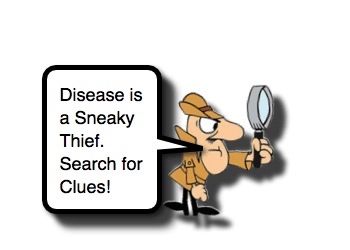Leukemia Clues

Leukemia: Basics
- Cancer is the #1 cause of death due to disease in developed countries.
- Traumatic injuries are still the overall leading cause of death.
- In the US, ~ 10,380 new cases are expected to occur among children in 2016 [American Cancer Society]
- Few known risk factors for childhood cancer [American Cancer Society]
- Children are more sensitive to ionization radiation, but the actual number of resultant cases is unknown.
- Small percentage attributed to inherited genetic mutations.
- Certain syndromes are associated with increased risk for cancer. (ex, Down Syndrome)
- Leukemia is the most common childhood malignancy
- Accounts for ~30% of all childhood cancers
- Acute lymphocytic leukemia (ALL) does occur in adults, but 75% of cases are in patients 0-19 years of age.
- Leukemia, can also occur in neonates. (See Neonatal Leukemia)
Leukemia: Presentation
- Recent meta-analysis looked at clinical presentation of childhood leukemia. [Clarke, 2016]
- Worth a gander.
- Advocates for reasonable vigilance using focused History and Physical Exam (novel concept).
- The early presentation is often with non-specific symptoms.
- Similar to the multitude of other self-limiting illnesses – makes it easy to miss.
- Pallor, Fever, and Fatigue are commonly encountered
- Also common in many other conditions
- These should cause us to actively look for other findings / symptoms
- Look for clues, even if non-specific:
- At diagnosis, 5 features were present in >50% of cases: [Clarke, 2016]
- Hepatomegaly (64%)
- Splenomegaly (61%)
- Pallor (54%)
- Fever (53%)
- Bruising (52%)
- In 33% – 50% of cases, 8 additional features were prominent: [Clarke, 2016]
- Recurrent Infections (49%)
- Fatigue (46%)
- Limb pain (43%)
- Hepatosplenomegaly (42%)
- Bruising/petechiae (42%)
- Lymphadenopathy (41%)
- Bleeding tendency (38%)
- Rash (35%)
- Abdominal symptoms (ex, anorexia, weight loss, pain, and distention) are also common.
- At diagnosis, 5 features were present in >50% of cases: [Clarke, 2016]
- One clue may not require investigation, but one clue leading to the discovery of another… and another… well, that’s how you build a case.
Leukemia: Remain Vigilant
- Fortunately, leukemia is relatively rare, and hopefully your patient will not have it, but…
- Our vigilance today makes a difference tomorrow.
- Fever and Abdominal Pain should make us think of more than Appendicitis or AGE.
- Limb pain requires more thought than just Septic Arthritis vs Growing Pain.
- Not all lymph nodes are “shotty.”
- Prolonged fever may be due to a virus, and contemplation of Incomplete Kawasaki Disease or Occult Pneumonia scores you bonus points, but let’s not overlook other ominous causes.
- Vigilance does not cost a lot of money.
- Perform a thoughtful history – “Did I ask about unexplained bleeding from the gums?”
- Be actively looking for clues during your exam – and specifically document the presence of lack of hepatomegaly, splenomegaly, lymphadenopathy, and/or pallor.
References
Clarke RT1, Van den Bruel A1, Bankhead C1, Mitchell CD2, Phillips B3, Thompson MJ4. Clinical presentation of childhood leukaemia: a systematic review and meta-analysis. Arch Dis Child. 2016 Oct;101(10):894-901. PMID: 27647842. [PubMed] [Read by QxMD]



[…] Pediatric EM Morsels: Leukemia Clues http://pedemmorsels.com/leukemia-clues/ […]
[…] – Dr. Amal Mattu @amalmattu), there are conditions that mandate respect for the WBC, like leukemia and childhood cancers. Let us take a minute to review the current recommendations for initial […]
I am looking for some good blog sites for studying. I was searching over search engines and found your blog site. Well i like your high quality blog site design plus your posting abilities. Keep doing it. Thanks for the Leukemia Clues — Pediatric EM Morsels entry, pedemmorsels.com webmaster! For more information on leukemia symptoms adults refer to Paul(%URL%) website and derive more information benefit.